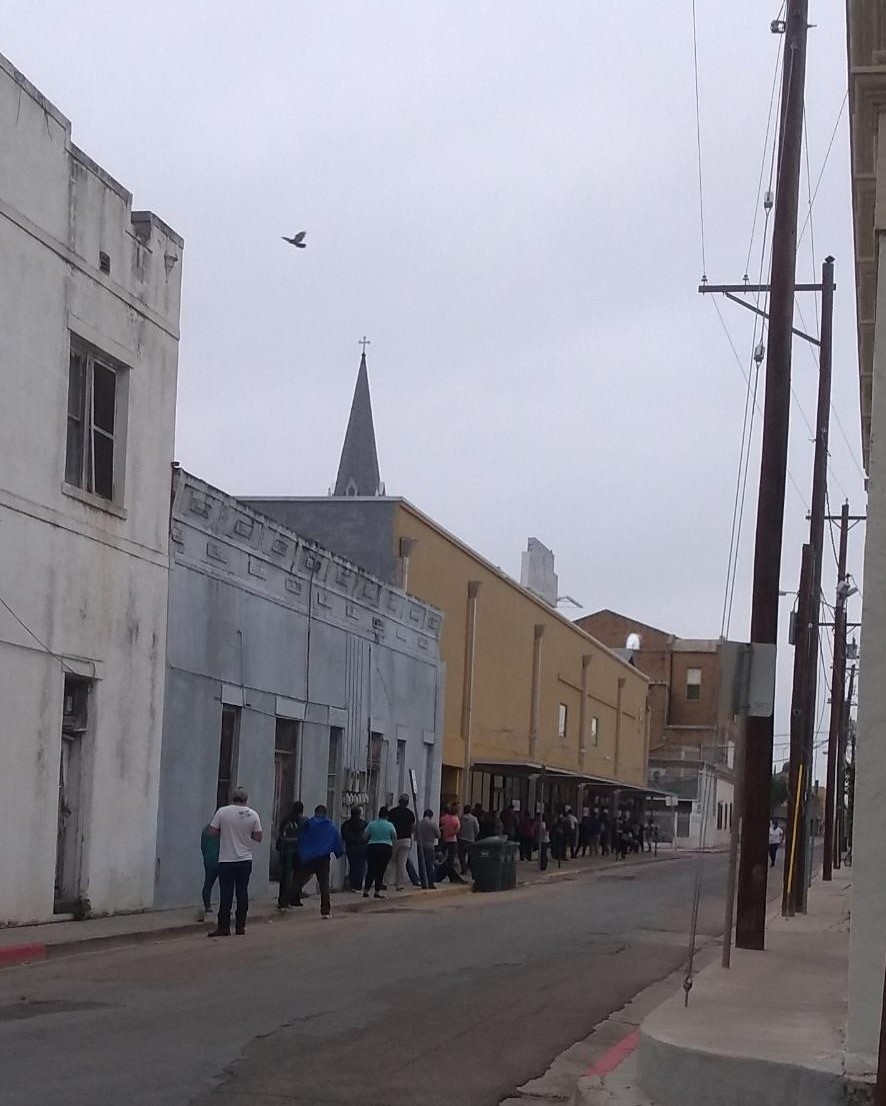Laredo, Texas – Mexicans in search of a stable income during an economic downturn, aggravated by a global pandemic, have resorted to crossing the border twice a week to have their blood drawn at US plasma centers.

Commercial plasma centers are attracting men and women from across the border in Nuevo Laredo, Mexico, by advertising up to $400 in monthly compensation for consistent weekly donations. At a time when the Mexican rate of inflation is accelerating, the US dollar provides not only greater buying power but a better life.
GCAM and BPL Plasma are commercial plasma centers situated in Laredo, Texas – roughly a mile away from the Laredo International Bridge that connects Laredo, Texas to Mexico. BPL Plasma and GCAM Plasma are located a half a mile away from each other and consistently compete to lure the most donors into their facilities.
28-year-old family-man Luis Izquierdo has been donating plasma at GCAM Plasma twice a week for over a year – more than 104 donations. Every Monday and Wednesday, Mr. Izquierdo crosses the border, waits in line for an hour, and is prepped for his plasma extraction, earning $70 for the week.
“I am very ambitious. For a while, I did it out of necessity… I came with a friend and made $50 which was 1,000 pesos,” Mr. Izquierdo explained. “Doing this I was able to pay off my debts and I could give myself and my kids some small luxuries.”
Mr. Izquierdo had been hesitant when his friend had brought him along, but once he saw his first payment his doubts quickly faded. By donating consistently for a month, Mr. Izquierdo had made almost double the amount of a minimum wage 45-hour workweek in Mexico. The minimum wage earner would have to work roughly 11 hours to make the equivalent of two donations. And complete about a 65-hour workweek to make the equivalent of eight consecutive donations in any given month.
GCAM Plasma’s Facebook profile for the community of Laredo is in Spanish and consistently uploads images of the Laredo International Bridge, displaying the levels of traffic to prospective and returning patrons. The representation of the border points to the demographic the Laredo GCAM Plasma center attracts Mexicans.
Recent Facebook posts show ways that donors can earn more money: four consecutive visits and donors have a chance to a participate in a raffle for $50, wear a GCAM Plasma shirt while you donate and earn $5, and lastly a raffle for a food basket (white rice, beans, canola oil, sugar, canned tuna, bread, and cereal). Donors resembled walking billboards, actively promoting GCAM Plasma in exchange for relatively little compensation. The almost weekly raffles for petty sums of cash and basic food items narrow the demographic of those that frequent plasma centers – poor Mexicans.
Within the first month of donating, Mr. Izauierdo had made an average of $60 dollars a week and secured himself a $120 bonus for donating eight consecutive times in a month. The promise of a bonus encouraged Mr. Izquierdo to continue donating the maximum amount of times: two times per week. The financial compensation was enough to compel him to continue his weekly donations, despite a painful allergic reaction.
“I had a lot of rashes on my arm and it was pretty painful. It would sting and itch a lot. I had to see a doctor and apply medication. I stopped coming for four months but soon after I came back,” Mr. Izquierdo remembered as he looked down at his bandaged arm.
When asked why he had returned the answer was once more “ambition.” Mr. Izquierdo on average makes $360 a month, which, to him, makes moments of discomfort insignificant. Mr. Izquierdo spends the money earned on “luxuries,” which, to the average American, are small indulgences. Mr. Izquierdo’s weekly payments allow for dinners out, popcorn at the movies, and toys for his children.
According to the Consejo Nacional de Evaluación de la Política de Desarrollo Social, CONEVAL, in the state of Tamaulipas, Mexico’s labor income increased by 4.2% between the first quarter of 2019 and 2020. The average Mexican worker now earns 2,018.85 constant pesos – an adjusted value used to compare purchasing power over time. Despite the significant increase in labor income, 32.5% of Mexicans still earn less than the cost of the common food basket – a unit of measurement used by CONEVAL to compare the purchasing power of the Mexican worker to the cost of basic food necessities. According to CONEVAL, the inability of the Mexican worker to afford basic food items is an indicator of poverty, which makes fast “good money” opportunities more desirable to the average Mexican worker.
Alfonso Martinez, a 47-year-old man, has been donating for several years to be able to make a “little bit of money” to take home. Mr. Martinez was accompanied by his 20 year-old daughter Sarai and his 21 year-old son Alonso. Mr. Martinez had stopped coming to his appointments for roughly a month as border restrictions intensified in an attempt to contain the virus. Mr. Martinez had come to depend on commercial plasma for a stable income. Mr. Martinez, a maintenance supervisor at a middle school, had his hours cut since the start of the pandemic, making his weekly appointments his main source of income.
Alonso, a psychology student, had been donating plasma since October 2019. Since the start of the pandemic, Alonso has used the extra money to contribute to the family income.
“It’s a little difficult ever since my mom was let go from her job. She works at a school and well now they’re closed,” Alonso said with a slight smile. “My sister and I are helping out as much as we can so that it won’t be so difficult for them.”
Mexican President, Andres Manuel Lopez Obrador, had proposed a minimum wage increase at the end of 2019, at the start of 2020 Mexico’s lowest earners saw a 20% increase in their paychecks. Mexico’s minimum wage is now 123.22 pesos, the equivalent of $6.53 US dollars. According to the Instituto Nacional de Estadística Geografía e Informática, INEGI, 56% of the workforce is informal. Informal forms of employment often result in salaries that are less than the minimum wage for millions of workers.
“They [employers] pay very little in Mexico. It may sound ambitious, but it’s nice to have money for me and my kids,” Mr. Izquierdo said.








